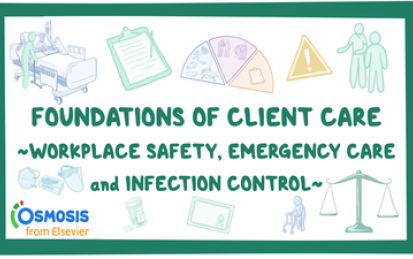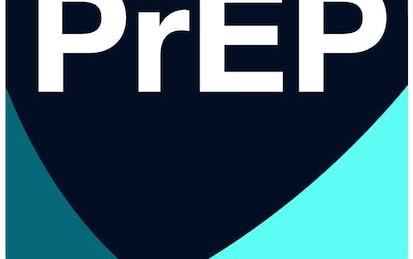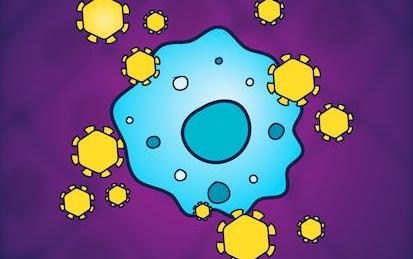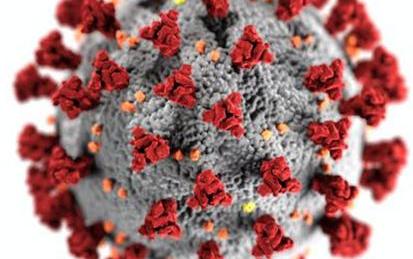

Our Courses

Infection Prevention in Nursing Homes
Learn about the role of environment in disease transmission and how to implement standard and transmission-based precautions to prevent the spread of antibiotic resistant bacteria and other infections in your facility.
-
Course by

-
 Self Paced
Self Paced
-
 5 hours
5 hours
-
 English
English

High Level Biocontainment for Healthcare Facilities
The goal of this 4-week course is to equip learners to safely care for a patient infected with a pathogen requiring high-level biocontainment. This can be accomplished in any healthcare facility given the correct approach and protocols. Please copy and paste the following link into a new tab/browser to view the video overview of our course. http://bit.ly/2bPZ6Cz In this course, we will: 1. Discuss the essentials of intake screening. 2. Investigate pathogen transmission characteristics and the chain of infection. 3.
-
Course by

-
 Self Paced
Self Paced
-
 12 hours
12 hours
-
 English
English

Epidemics - the Dynamics of Infectious Diseases
Not so long ago, it was almost guaranteed that you would die of an infectious disease. In fact, had you been born just 150 years ago, your chances of dying of an infectious disease before you've reached the tender age of 5 would have been extremely high. Since then, science has come a long way in understanding infectious diseases - what they are, how they spread, and how they can be prevented. But diseases like HIV/AIDS, Malaria, Tuberculosis, or the flu are still major killers worldwide, and novel emerging diseases are a constant threat to public health.
-
Course by

-
 Self Paced
Self Paced
-
 17 hours
17 hours
-
 English
English

Strategies for Assisted Living Communities during COVID-19
SARS-CoV-2, the virus that causes COVID-19, poses a high risk for assisted living communities due to residents’ age, health status, and communal living environment. The COVID-19 response has largely focused on nursing homes, leaving assisted living communities in the United States with fragmented guidance on how to respond to COVID-19 challenges. This course provides comprehensive instruction and resources for administrators and direct-care staff of assisted living communities. Learners will hear from experts about best practices to prevent COVID-19 outbreaks and promote well-being.
-
Course by

-
 Self Paced
Self Paced
-
 10 hours
10 hours
-
 English
English

Improving Immunity Based on Traditional Eastern Exercises
Exercise is medicine. Regular and moderate exercise can effectively strengthen immune system so as to reduce the risk of virus infection and also improve or assist in the treatment of dysthymic disorders like anxiety and depression. This course provides suggestions for the general public about how to actively respond to the outbreak of novel coronavirus. It also explains: how the immune system reacts when viruses invade into the body; why exercises can enhance immunity and what is the mechanism; what the difference is between western sports and traditional eastern exercises.
-
Course by

-
 Self Paced
Self Paced
-
 15 hours
15 hours
-
 English
English

Sustainable Food Production Through Livestock Health Management
Learn about the impact of infectious disease on sustainable animal-based food production by understanding the science of growth, immunity, and infection and by learning the problem-solving skills needed to advance animal health and food production through optimal management practices. There is a growing global need in agricultural production for a workforce that is capable of integrating knowledge of animal health and production with an understanding of consumer preferences in the context of economic reality, business efficiency, and ethical constraint.
-
Course by

-
 Self Paced
Self Paced
-
 19 hours
19 hours
-
 English
English

COVID-19: What You Need to Know
Register for this free course here: https://www.coursera.org/learn/covid-19-what-you-need-to-know?edocomorp=public-health-free-courses COVID-19 is a global pandemic that has already resulted in hundreds of thousands of infections and thousands of deaths, with many more anticipated.
-
Course by

-
 Self Paced
Self Paced
-
 3 hours
3 hours
-
 English
English

Developing the SIR Model
Compartmental modelling is a cornerstone of mathematical modelling of infectious diseases and this course will introduce some of the basic concepts in building compartmental models, including how to interpret and represent rates, durations and proportions. You'll learn to place the mathematics to one side and concentrate on gaining intuition into the behaviour of a simple epidemic, and be introduced to further basic concepts of infectious disease epidemiology, such as the basic reproduction number (R0) and its implications for infectious disease dynamics.
-
Course by

-
 Self Paced
Self Paced
-
 21 hours
21 hours
-
 English
English

Global Health at the Human-Animal-Ecosystem Interface
The University of Geneva, Institute Pasteur, University of Montreal and Centre Virchow-Villermé/University Paris Descartes welcome you to this MOOC on "Global Health at the Human-Animal-Ecosystem Interface"! Over the next 8 weeks, you will explore and learn about some of the major and current Global Health Challenges at the Human-Animal-Ecosystem Interface: zoonotic emerging infections (e.g. Ebola, Nipah, MERS, Avian Influenza), antimicrobial resistance, neglected tropical diseases (e.g. rabies, leishmaniasis, zoonotic TB), snakebite and other human-animal conflicts etc.
-
Course by

-
 Self Paced
Self Paced
-
 49 hours
49 hours
-
 English
English

Immunology: Innate Immune System
Our immune system relies on an innate and an adaptive arm that communicate and collaborate to provide us with an optimal response against pathogens. This course focuses on our innate immunity which provides us our first, fast and inherited defence against infections. In this course, you will take a closer look at the mechanisms and cellular components involved in this swift response that occurs within minutes of exposure to a threat.
-
Course by

-
 Self Paced
Self Paced
-
 7 hours
7 hours
-
 English
English

Foundations of Client Care 2: Workplace Safety, Emergency Care, and Infection Control
A review of the principles of workplace safety, emergency care, and infection control within a healthcare setting.
-
Course by

-
 Self Paced
Self Paced
-
 9
9
-
 English
English

Building on the SIR Model
The other two courses in this specialisation require you to perform deterministic modelling - in other words, the epidemic outcome is predictable as all parameters are fully known. However, this course delves into the many cases – especially in the early stages of an epidemic – where chance events can be influential in the future of an epidemic. So, you'll be introduced to some examples of such ‘stochasticity’, as well as simple approaches to modelling these epidemics using R.
-
Course by

-
 Self Paced
Self Paced
-
 20 hours
20 hours
-
 English
English

Bacteria and Chronic Infections
This course will give you an introduction to bacteria and chronic infections. Leading experts in the field will make you familiar with the fundamental concepts of microbiology and bacteriology such as single cell bacteria, biofilm formation, and acute and chronic infections.
-
Course by

-
 Self Paced
Self Paced
-
 10 hours
10 hours
-
 English
English

Immunology: Immune Failures and Cancer Immunology
Our immune system is a powerful network. It protects us from external threats, such as harmful substances and pathogenic agents, as well as cellular changes which could lead to diseases. Complications emerge when our natural defences do not function properly, which can result in immune disorders. These can take the form of less severe issues such as insect allergy. Others are more harmful, such as auto aggressive immune reactions, that lead to localised or systemic tissue damage.
-
Course by

-
 Self Paced
Self Paced
-
 6 hours
6 hours
-
 English
English

PrEParing: PrEP for Providers and Patients
Pre-Exposure Prophylaxis (PrEP) using the antiretroviral medication emtricitibine/tenofovir approved in countries around the world is a highly effective means of reducing transmission of HIV through sexual encounters and needle sharing. This Johns Hopkins University course PrEPares you with essential information, concepts and practical advice regarding PrEP from leaders in the field.
-
Course by

-
 Self Paced
Self Paced
-
 16 hours
16 hours
-
 English
English

Immunology: Immune System and Infectious Diseases
The constant struggle between pathogens and the human immune system has been posing a significant threat to our health for thousands of years. Infectious diseases remain the leading cause of death worldwide. These are typically caused by bacteria (intra- and extracellular), viruses, fungi, parasites (worms/helminths) and prions. Under normal circumstance, the immune response orchestrates a robust protection against these pathogens using both molecular and cellular mechanisms.
-
Course by

-
 Self Paced
Self Paced
-
 11 hours
11 hours
-
 English
English
Point of Care Testing for Sexually Transmitted Infections
What are sexually transmitted infections (STIs), and why do we care? What is point of care testing (POCT)? What do clinicians and patients want and need from the POCT for STIs? Point of care testing, or medical diagnostic testing done at the time of patient care, is an important tool for the treatment of sexually transmitted infections. This course looks at point of care testing for sexually transmitted infections from the perspective of the clinician, the patient, and the regulatory environment.
-
Course by

-
 Self Paced
Self Paced
-
 6 hours
6 hours
-
 English
English

Immunology: The Immune System and its Failures
Our online Immunology Specialisation has been developed to provide central concepts in human immunology as well as advanced topics from cutting-edge research relating to clinical disease of the immune system over five designated specialisations. The initial two courses discuss the role of the innate and adaptive immune responses serving to protect the body from harmful pathogens, which if dysregulated can also lead to immune-mediated diseases such as immunodeficiencies, autoimmunity, allergy and chronic infection, evaluated in the remaining three courses.
-
Course by

-
 Self Paced
Self Paced
-
 English
English

COVID-19 - A clinical update
As an expert in infectious diseases, editor of the Journal of Infectious Diseases and author of the textbook Infectious Diseases: A clinical short course, McGraw-Hill April 2020, I have been concerned about the misinformation being shared about the COVID-19 epidemic. How did this disease develop? Where did it come from? How does it cause diseases? The answers to these questions will be answered in the first video of module 1. The world has been startled and frightened by the rapid spread of this virus throughout the world. In Video 2 the epidemiology as presently understood is reviewed.
-
Course by

-
 Self Paced
Self Paced
-
 13 hours
13 hours
-
 English
English

Finding Hidden Messages in DNA (Bioinformatics I)
Named a top 50 MOOC of all time by Class Central! This course begins a series of classes illustrating the power of computing in modern biology. Please join us on the frontier of bioinformatics to look for hidden messages in DNA without ever needing to put on a lab coat. In the first half of the course, we investigate DNA replication, and ask the question, where in the genome does DNA replication begin?
-
Course by

-
 Self Paced
Self Paced
-
 16 hours
16 hours
-
 English
English



